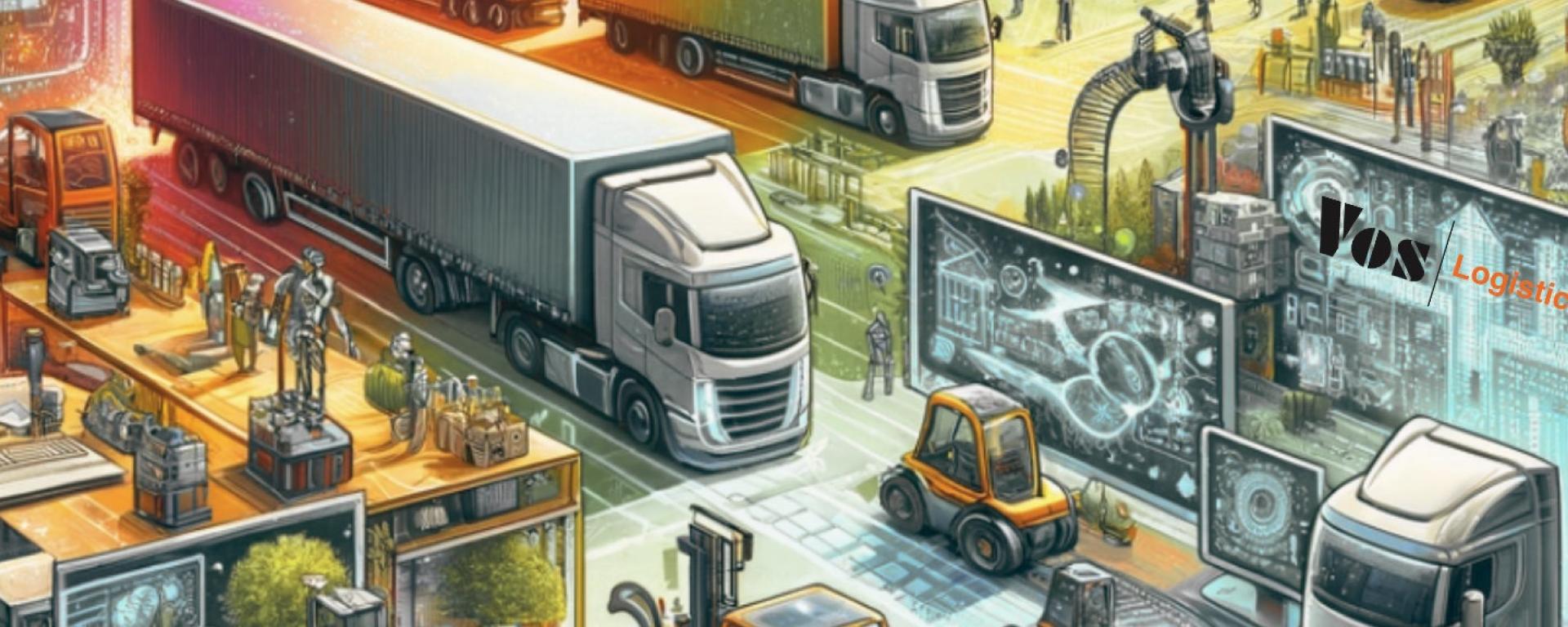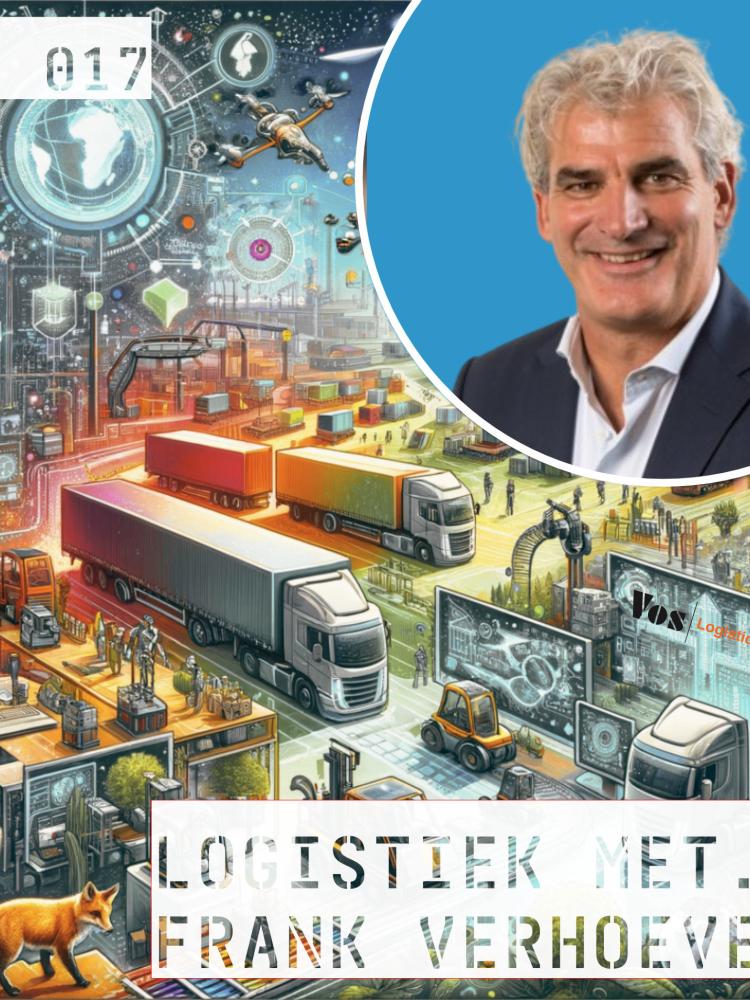

The latest trends and challenges for the logistics industry
By Frank Verhoeven
I was recently invited to the Dutch Logistiek met… Podcast, which translates into Logistics with…, well, me in this case. Martijn Graat, the host of the podcast, and I spoke about the main challenges and developments in the logistics industry. In the player below or through your favourite podcast app, you can listen to the episode in Dutch. For those who prefer reading, I’ve shared the episode's main points below.
During Vos Logistics' 75th anniversary a few years ago, we formulated the major trends for the coming years. Instead of looking back on those 75 years, we chose to look 25 years ahead. What will the world of logistics look like when Vos Logistics has existed for 100 years? The four most important trends we formulated at the time were:
- The potential of digitalization and artificial intelligence
- Making the sector more sustainable
- The challenges in the labour market
- E-commerce and its impact on the sector
In addition to these megatrends, there have been black swans in recent years that have had a major effect on our sector. Some of the biggest global disruptions to supply chains have occurred in recent years. The pandemic is perhaps the best example of this, but also the blockage of the Suez Canal and, more recently, the geopolitical situation, Russia-Ukraine, Israel-Gaza, the problems in the Red Sea, and the limited transit of the Panama Canal due to drought. Each time, the sector rebounds, and we all work together to find a solution for our customers.
Today’s biggest challenges
The two biggest challenges we now face are the recent economic developments and the energy transition. The sharp decline in demand is a challenge for all sectors, but in a business with low margins, it is extra important to control your costs properly. At the same time, we must all work towards making the sector more sustainable. Cleaner forms of transport are becoming increasingly popular, but the transition to completely zero-emission transport faces quite a few challenges. The costs for an electric truck are not yet commensurate with those of a diesel truck. Even if you invest in electric trucks, the question is whether you can get sufficient electrical capacity to charge that electric fleet.
Sustainability as a strategic spearhead
Already in 2010, we decided to develop a sustainability strategy. Every year, we measure the effectiveness of that strategy and make adjustments where necessary. Transport has a major impact on our carbon footprint. We are therefore constantly working to improve the efficiency of our transport operations. This goes much further than just electrifying our fleet. Consider, for example, loading our trucks more efficiently or optimizing routes and reducing empty kilometres. Multimodal solutions also make an important contribution to reducing the carbon footprint of our operations. Unfortunately, the share of multimodal transport has fallen recently. It is very challenging to make this economically and practically feasible.
Of course, we don't just limit ourselves to what happens on the road. We take energy-saving measures in our buildings and, for example, invest in solar panels on the roofs of our warehouses. Our employees also play a major role in this. Sometimes, small adjustments in behaviour or how we work can have a major positive impact. Creating a pleasant and safe working environment also falls under sustainability.
Shortages in the labour market
Thanks to the focus on a sustainable working environment, we have successfully found the right people so far, although this requires more and more effort. We have seen a shortage in the labour market in recent years, especially regarding drivers, workshop employees and executive roles in our warehouses. An advantage of the economic downturn is that the labour market has slightly more room to manoeuvre. This makes it easier to find staff in the short term, but in the long term, the challenge will become increasingly greater, with the ageing population set to increase significantly in the coming years.
Technology as a solution to shortages and an enabler of efficiency
Several trends will contribute positively to these challenges. One of them is the increase in automation. More and more solutions are available that can support warehouse workers in their work. Robots and cobots work closely with humans and increase the productivity of logistics operations. They relieve employees of heavy and repetitive work and give them more time to focus on activities that add value. There are also interesting possibilities on the road. Self-driving trucks can solve a large part of the driver shortage. Long journeys between logistics hubs can be carried out by self-driving trucks, with human drivers taking over the trailers when the goods need to enter the city, to name just one example. This will not solve the driver shortage in the short term, but there are certainly opportunities here in the long term.
A second important trend is the digitalization of the sector. Major steps have been taken in recent years, but processes still require a lot of paper. One of the projects we are currently working on is the application of so-called sign on glass, where the end customer signs on a tablet, after which the delivery confirmation is immediately available to all parties in the chain. The increasing amount of available data is another point where increasing profits are achieved. Based on this data, more intelligent and efficient planning solutions can be developed with the help of artificial intelligence. By predicting better and responding more quickly to changes, deliveries can be made faster and with a higher fill rate for our trucks.
A crystal ball
Increasing digitalization and techniques such as artificial intelligence are bringing the crystal ball closer and closer. However, we are still far from where we can accurately predict the future. There are plenty of challenges awaiting us in the coming years. Supply chains have always faced unexpected disruptions, but the peaks are getting higher, the troughs are getting deeper, and they are happening faster and faster. Previously mentioned trends, such as digitalization and automation, will be increasingly important. We are facing a challenging time, but we are ready for it.
 Contact
Contact